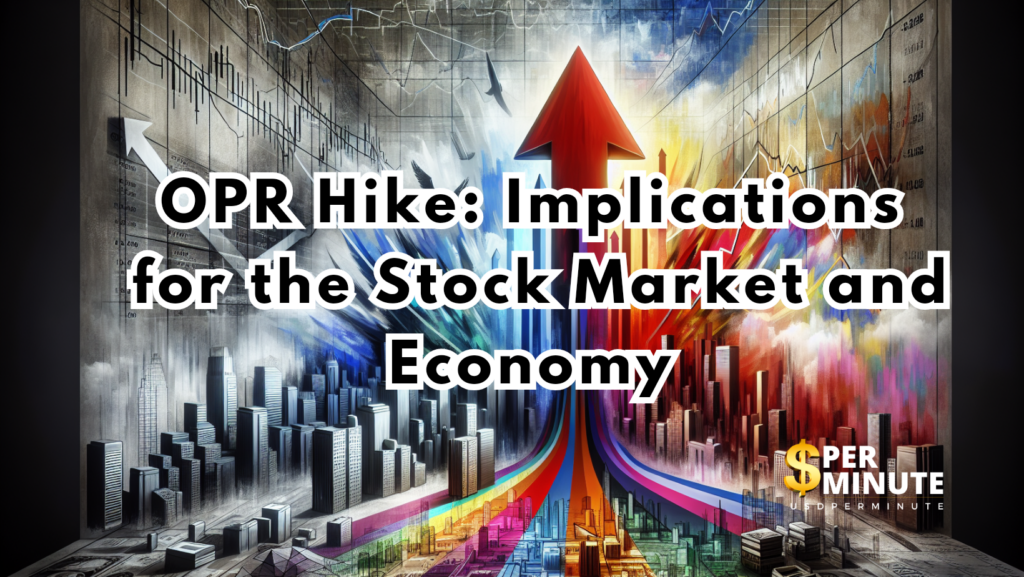OPR Hike: Implications for the Stock Market and Economy

The Overnight Policy Rate (OPR) is a critical tool used by central banks, such as Bank Negara Malaysia (BNM), to influence the economy. An increase in the OPR often signals a tightening of monetary policy, which can have far-reaching effects on various sectors of the economy, including the stock market. In this article, we will explore the implications of an OPR hike on the stock market and the broader economy, focusing on the potential benefits and risks associated with this monetary policy decision.
What is the OPR?
The OPR is the interest rate at which banks lend to each other overnight. Central banks adjust the OPR to control inflation, manage economic growth, and maintain financial stability. When the economy shows signs of overheating or when inflation is rising, central banks may increase the OPR to cool down demand. Conversely, a lower OPR is used to stimulate economic activity during periods of slow growth or recession.
Impact on the Stock Market
- Interest Rates and Stock Valuations
- An increase in the OPR leads to higher borrowing costs for businesses and consumers. As interest rates rise, companies may find it more expensive to finance operations and expansions, leading to a potential decrease in corporate earnings. This, in turn, can result in lower stock valuations, as investors may anticipate reduced profitability and adjust their expectations accordingly.
- Shift in Investor Sentiment
- Higher interest rates often lead to a shift in investor sentiment. Investors may move away from riskier assets like stocks to safer investments such as bonds or fixed deposits, which offer better returns in a higher interest rate environment. This shift in sentiment can lead to a sell-off in the stock market, causing prices to decline.
- Sector-Specific Effects
- The impact of an OPR hike is not uniform across all sectors. Interest rate-sensitive industries such as real estate, banking, and consumer discretionary may experience significant effects. For example, real estate companies might see a decline in property demand due to higher mortgage rates, while banks could benefit from higher interest margins on loans.
Implications for the Economy
- Slower Economic Growth
- An OPR hike can lead to slower economic growth as higher borrowing costs reduce consumer spending and business investment. When individuals and businesses spend less, economic activity slows down, which can affect employment levels, wage growth, and overall economic expansion.
- Inflation Control
- One of the primary reasons for increasing the OPR is to control inflation. By making borrowing more expensive, the central bank can reduce the money supply in the economy, thereby lowering inflationary pressures. While this can help stabilize prices, it may also result in short-term economic pain, especially for debt-dependent businesses and consumers.
- Impact on Currency
- A higher OPR can strengthen the national currency, as higher interest rates attract foreign investment. A stronger currency can reduce the cost of imports, helping to control inflation. However, it can also make exports more expensive, potentially hurting the competitiveness of export-oriented industries.
Balancing Risks and Rewards
While an OPR hike can have negative short-term impacts on the stock market and economic growth, it is often necessary to maintain long-term financial stability. The challenge for policymakers is to balance the need to control inflation with the potential risks to economic growth and market stability. Investors and businesses need to stay informed and adapt their strategies to navigate the complexities of a changing interest rate environment.
Conclusion
An OPR hike has significant implications for both the stock market and the broader economy. While it can lead to higher borrowing costs, reduced corporate earnings, and a shift in investor sentiment, it also plays a crucial role in controlling inflation and maintaining financial stability. Understanding these dynamics is essential for investors, businesses, and policymakers as they navigate the challenges and opportunities presented by changes in the OPR.